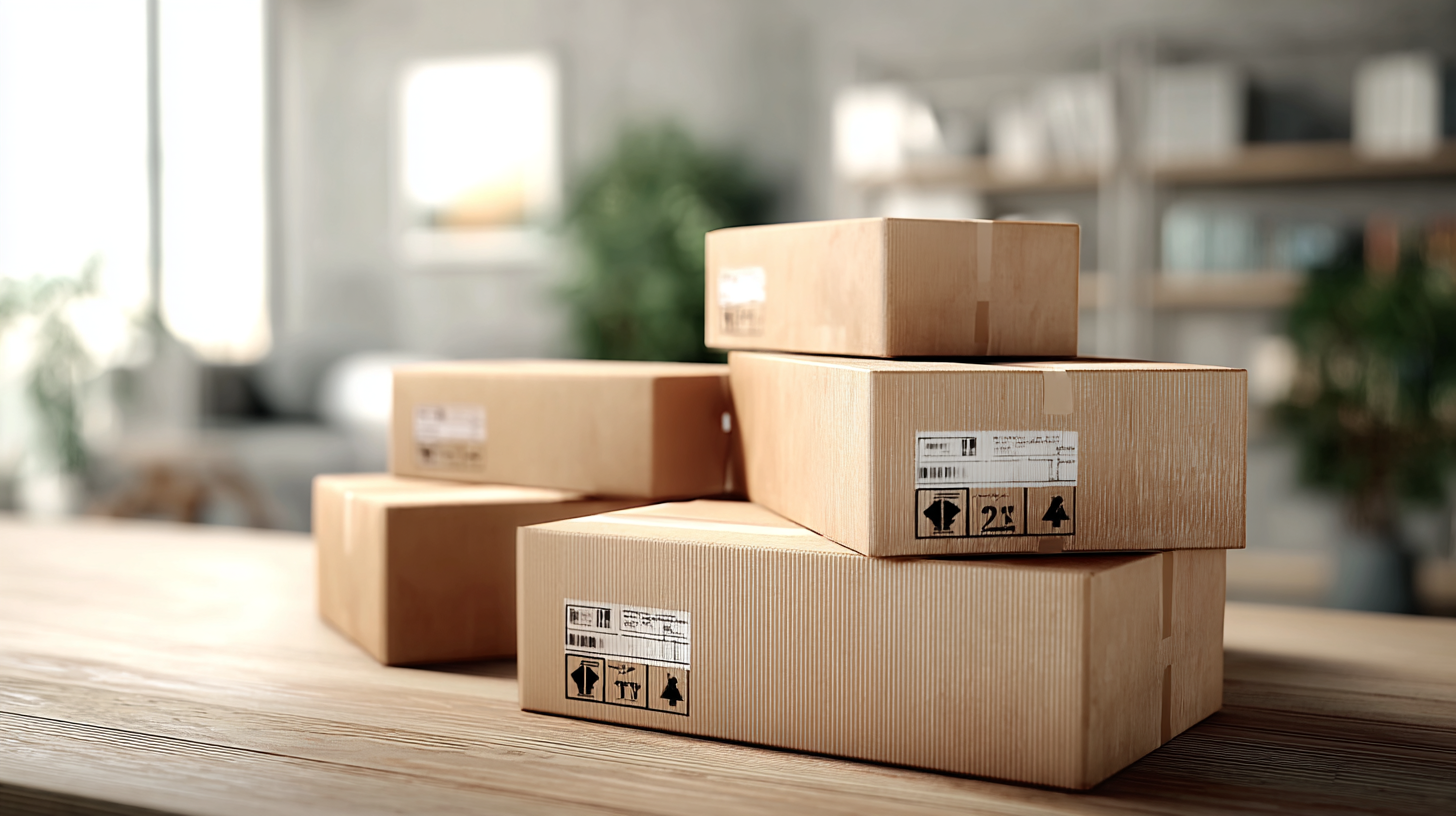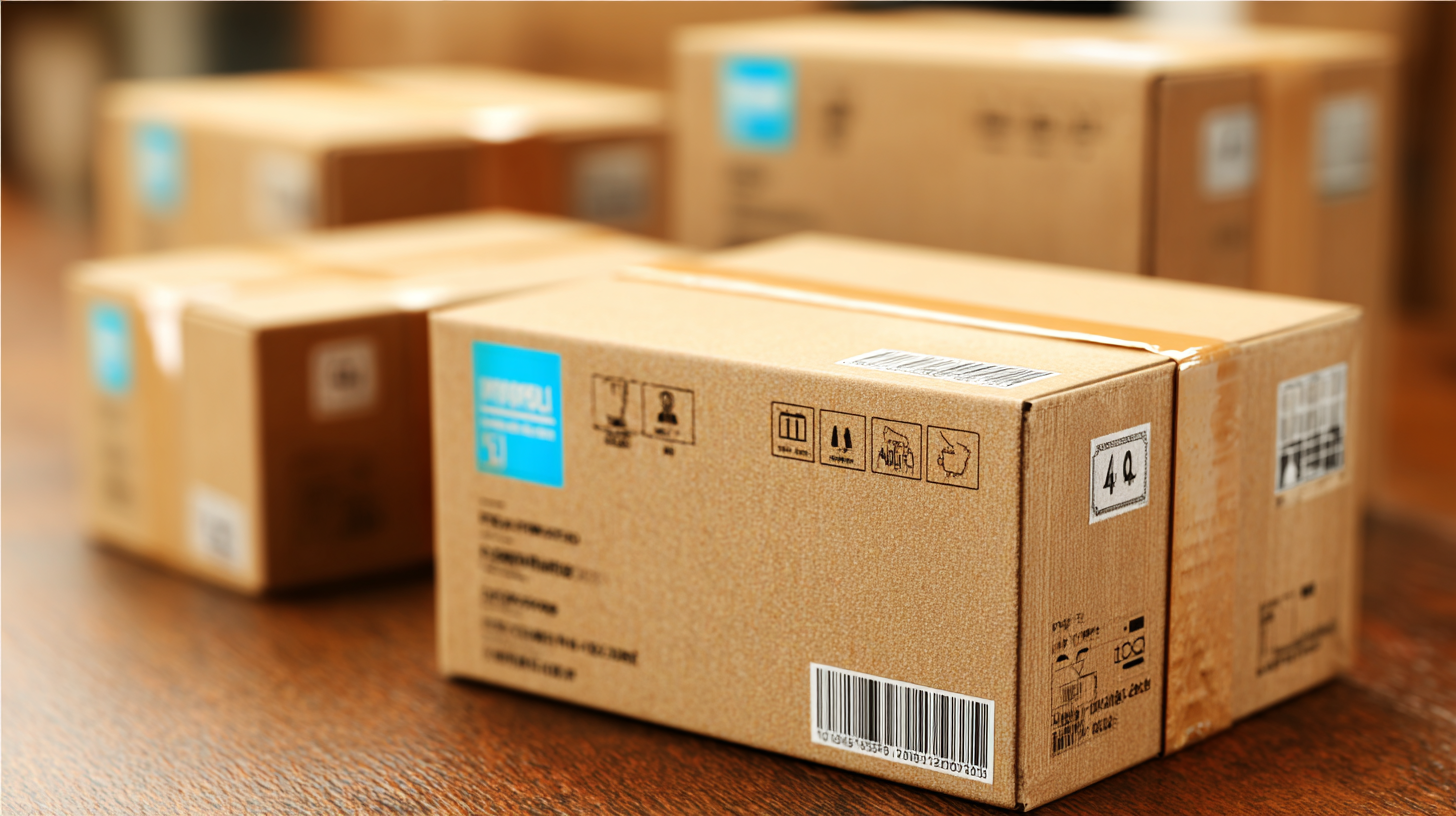
Maximizing Value with Best Packaging Parcel After Sales Service and Maintenance Cost Strategies
In today's competitive market, the efficiency and effectiveness of after-sales service and maintenance can significantly influence a company's overall value. One crucial element that often gets overlooked in maximizing this value is the strategic selection of Packaging Parcels. The right packaging not only ensures that products reach customers in optimal condition but also plays a pivotal role in minimizing after-sales costs.

In this blog, we will explore detailed technical specifications that make for an effective Packaging Parcel and guide you through strategies on how to choose the best options for your products. By understanding the interplay between packaging and after-sales service, businesses can enhance customer satisfaction while reducing operational expenses, ultimately leading to a stronger bottom line.
Strategies for Selecting Optimal Packaging Solutions in After Sales Service
 When it comes to after sales service, selecting the right packaging solutions is crucial for maximizing value and minimizing maintenance costs. The packaging not only protects the product during transport but also reflects the brand's commitment to quality and customer satisfaction. Choosing materials that are both durable and environmentally friendly can enhance the perceived value of your product, making it more appealing to customers. Additionally, considering the size and shape of packaging can help reduce shipping costs, further improving the bottom line.
When it comes to after sales service, selecting the right packaging solutions is crucial for maximizing value and minimizing maintenance costs. The packaging not only protects the product during transport but also reflects the brand's commitment to quality and customer satisfaction. Choosing materials that are both durable and environmentally friendly can enhance the perceived value of your product, making it more appealing to customers. Additionally, considering the size and shape of packaging can help reduce shipping costs, further improving the bottom line.
Another significant strategy is to invest in customizable packaging that can adapt to various products. This flexibility allows businesses to streamline their logistics and reduce waste, as they won't have to rely on a one-size-fits-all approach. Moreover, incorporating features such as easy-to-open designs can elevate the customer experience, leading to positive reviews and repeat business. By focusing on these optimal packaging solutions, companies can effectively balance quality, cost, and sustainability in their after sales service strategy.
Evaluating Cost-Effective Maintenance Techniques for Enhanced Value
 In the competitive landscape of packaging and logistics, maintaining efficient after-sales service and minimizing maintenance costs are pivotal for maximizing value. According to a recent report by McKinsey & Company, companies that implement data-driven maintenance strategies can see a reduction in costs by as much as 20% while improving service reliability. Utilizing predictive maintenance techniques, businesses can anticipate failures before they occur, leading to significant savings on emergency repairs and minimizing downtime. This proactive approach allows companies to allocate resources more effectively, ultimately enhancing customer satisfaction.
In the competitive landscape of packaging and logistics, maintaining efficient after-sales service and minimizing maintenance costs are pivotal for maximizing value. According to a recent report by McKinsey & Company, companies that implement data-driven maintenance strategies can see a reduction in costs by as much as 20% while improving service reliability. Utilizing predictive maintenance techniques, businesses can anticipate failures before they occur, leading to significant savings on emergency repairs and minimizing downtime. This proactive approach allows companies to allocate resources more effectively, ultimately enhancing customer satisfaction.
Moreover, the packaging industry is increasingly leveraging technology to implement cost-effective maintenance techniques. A survey conducted by the Packaging Machinery Manufacturers Institute indicated that 70% of industry leaders are investing in IoT-enabled devices for real-time monitoring of equipment health. This integration not only facilitates timely interventions but also enhances operational efficiencies. By evaluating these innovative maintenance strategies, organizations can ensure that their after-sales service is not just a reactive solution but a cornerstone of their value proposition, reinforcing their commitment to quality and reliability in an ever-evolving market.
Innovative Alternatives to Traditional Parcel Delivery Methods
The logistics landscape is rapidly evolving, and companies are now challenged to find innovative alternatives to traditional parcel delivery methods. As reported by the International Parcel Delivery Association, the global parcel volume is expected to reach 200 billion by 2026, emphasizing the necessity for businesses to adopt efficient and cost-effective delivery strategies.
Embracing technologies like drone delivery and autonomous vehicles not only reduces operational costs but also improves delivery speed, enhancing overall customer satisfaction.
Tips: Consider implementing a hybrid delivery model that combines crowdsourced delivery with traditional methods. This approach can significantly cut costs and allow for greater flexibility in meeting customer demands. Moreover, investing in smart packaging solutions, such as temperature-controlled boxes for perishables, can minimize returns and maximize value by ensuring that products arrive at their destination in optimal condition.
Furthermore, the shift towards sustainable delivery methods is critical. According to a survey by Deloitte, 67% of consumers prefer to purchase from environmentally responsible companies. Implementing electric vehicles and optimizing delivery routes can dramatically reduce the carbon footprint, appealing to the environmentally-conscious consumer while highlighting your brand's commitment to sustainability.
The Impact of Sustainable Packaging on Long-Term Cost Reduction
The increasing emphasis on sustainable packaging has significant implications for long-term cost reduction in various industries. With a burgeoning awareness of environmental issues, businesses are under pressure to adopt eco-friendly materials and practices. According to recent market forecasts, the sustainable packaging sector is expected to grow substantially, driven by a rise in consumer consciousness regarding environmental impacts. The trend towards using biodegradable materials and incorporating recycled content—especially noted in legislative changes like the EU's mandate for plastic bottles—highlights the shift towards more responsible sourcing.
Additionally, sectors such as cosmetics are experiencing a "packaging upgrade" trend, wherein companies are not only aiming for aesthetic appeal but also embracing environmentally sustainable practices as key components of their corporate social responsibility strategies. This focus on sustainable packaging not only enhances brand image but also offers potential savings by reducing waste and optimizing material usage. As industries confront escalating regulatory pressures and consumer expectations, the integration of sustainable packaging solutions emerges as a crucial strategy for managing both operational costs and environmental footprints.
Impact of Sustainable Packaging on Long-Term Cost Reduction
Leveraging Technology for Efficient After Sales Support and Maintenance
In today's competitive market, leveraging technology for efficient after-sales support and maintenance has become essential for businesses aiming to maximize value. The integration of advanced systems such as AI-driven chatbots and CRM software allows companies to streamline their customer service processes. By using data analytics, businesses can identify common issues faced by customers post-purchase, enabling them to proactively address problems and enhance customer satisfaction. This technology not only improves the speed and accuracy of responses but also frees up human resources to focus on more complex tasks that require personalized attention.
Moreover, remote monitoring tools and IoT devices play a crucial role in after-sales maintenance strategies. These technologies provide real-time insights into product performance, allowing businesses to predict maintenance needs and minimize downtime. By staying ahead of potential issues, companies can reduce service costs and extend the lifespan of their products. This proactive approach, coupled with effective communication channels, enhances the overall customer experience and fosters brand loyalty, ultimately leading to increased profitability and market share.



